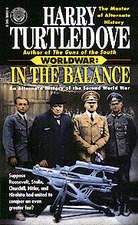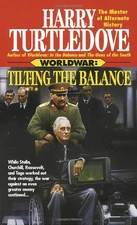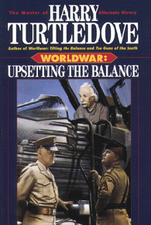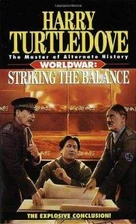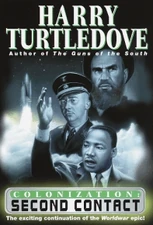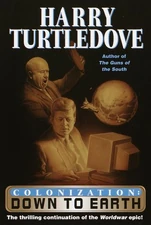
Uranium is a heavy metal, and Element 92 on the Periodic Table. Many contemporary uses of uranium exploit its unique nuclear properties. Uranium-235 has the distinction of being the only naturally occurring fissile isotope. The 1789 discovery of uranium in the mineral pitchblende is credited to Martin Heinrich Klaproth, who named the new element after the planet Uranus. Eugène-Melchior Péligot was the first person to isolate the metal, and its radioactive properties were uncovered in 1896 by Antoine Becquerel. Research by Enrico Fermi and others starting in 1934 led to its use as a fuel in the nuclear power industry and in "Little Boy", the first atomic bomb weapon used in war.
Uranium in "Getting Real"[]
Following the Sino-American War of 2117, the United States was forced to pay an indemnity of twenty trillion dollars to China in either gold, petroleum, uranium or hard currency to be agreed upon with the full amount to be paid within ten years.
Uranium in Southern Victory[]
By 1943, most of the countries fighting the Second Great War, including the United States, the Confederate States, Britain, France, Germany, and Austria-Hungary were attempting to construct superbombs with uranium. Germany was the first to successfully build and use the bomb, destroying the Russian capital Petrograd in 1944.
In 1941, Confederate physicist Henderson V. FitzBelmont had explained several possible enrichment techniques he had thought of in his pitch to President Jake Featherston, including gaseous diffusion using the highly toxic uranium hexafluoride. His inability to say with certainty whether any of these would work led Featherston to refuse to grant him the men and resources his proposed project would require.
However, once it was learned that the United States was attempting to build such a bomb, Featherston green-lighted the project. As the war began turning against the C.S., FitzBelmont was always ready to remind Featherston of his initial refusal.
Uranium in Worldwar[]
When the Race invaded Earth, a number of nations were already looking into the manufacture of atomic bombs. Uranium atoms were known to be the least stable of the naturally occurring elements' atoms (though plutonium elements were larger and thus weaker), and so were looked into by physicists. However, only the isotope U-235 is useful for atomic devices, and it is much rarer than U-238. Physicists the world over were struggling to remove U-238 from uranium and be left with U-235--called Highly Enriched Uranium, or HEU. They were having difficulty designing a practicable enrichment process.
Earth physicists were helped greatly when a sample of plutonium was captured from a destroyed Lizard starship in a joint venture by the SS and the NKVD commanded by Otto Skorzeny. Germany and the Soviet Union divided the plutonium equally, but since the raid occurred within Soviet territory only the Russian uranium reached its intended destination; the German sample was once again divided in half when Heinrich Jäger was captured by Mordechai Anielewicz while carrying it across Poland. He was allowed to carry half of his sample to Germany; the other half was sent to the United States on a British submarine where it was eventually carried to Denver by Leslie Groves.
The Soviets used their complete sample to build an atomic bomb, which they used as a defensive weapon to destroy one of the Race's armies in their territory. Neither the American nor the German samples were large enough for this, and so were used for research purposes. This was one reason why both the Germans and the Americans were able to enrich uranium on their own and construct their own bombs well ahead of the Soviets.
Physicists in several different countries also attempted to learn about the Race's successful enrichment techniques by interrogating POWs. In Japan, Teerts was coerced into sharing information with physicists. In the United States, Ullhass and Ristin were convinced to do so much more willingly.
| |||||||||||
| |||||||||||||||||||||||||











